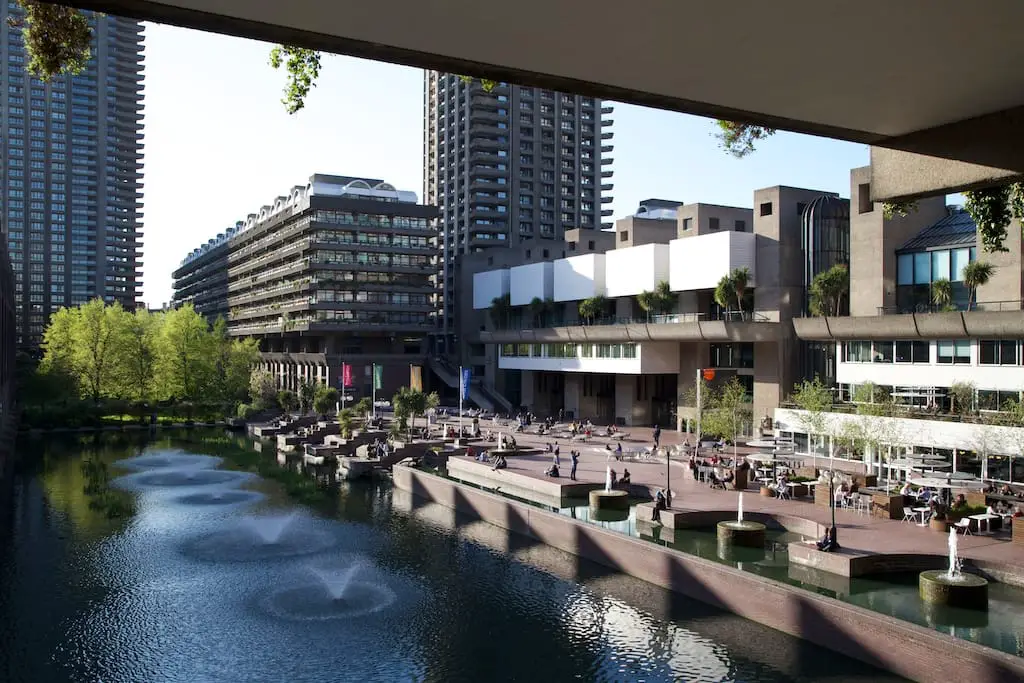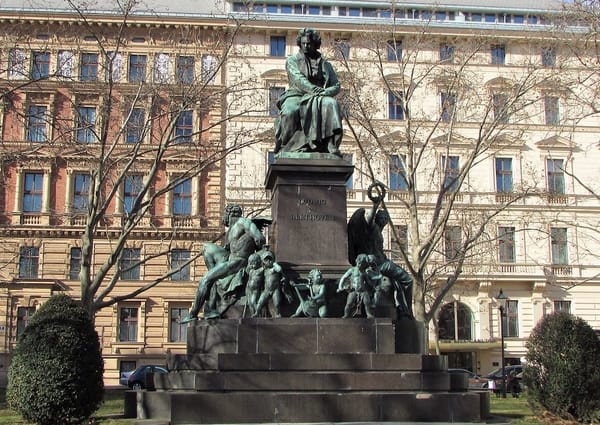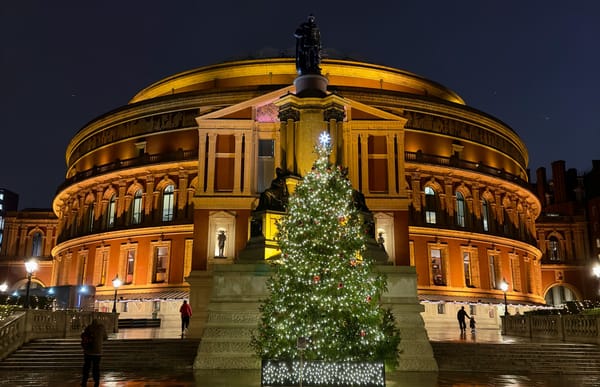Barbican Rising: A Brutalist Haven for Art in Post-War London
Once built on the ruins of war, the Barbican Centre redefined how a city could live with and through the arts—melding brutalist architecture, civic imagination, and inclusive programming into a singular cultural powerhouse.

If war has the ability to destroy, art has the power to revitalise. Right in the heart of the city of London stands a sprawling structure that serves as tangible proof of this axiom. The Barbican Centre, the largest multidisciplinary arts centre in Europe today, is situated on the erstwhile Cripplegate Ward in Greater London which was destroyed during the Second World War. The Blitz, a German bombing campaign on English soil that lasted for eight months, had killed more than 40,000 civilians and had left major parts of the capital city in ruins by 1941. In 1951, the Cripplegate Ward had only 48 registered residents.
In peacetime, England, along with the rest of the Western world, sought not just a reversal of the ravages of war, but a rejuvenation of hope and social security. Ideas of ‘welfare state’ and ‘social mobility’ captured the political and public consciousness. Thus emerged one of the most ambitious state housing projects in the world, an elevated concrete ‘city within a city’ built on the demolished Cripplegate known as the Barbican Estate, commissioned as a gift to the nation by the City of London Corporation. The estate, designed by architects Geoffry Powell, Christoph Bon and Peter Chamberlin, is an iconic brutalist wonder spread over an area of 35 acres.
Spearheaded by the FrenchSwiss architect Le Corbusier (who also devised the urban planning of Chandigarh), brutalism thrived in Britain as an architectural movement that truly exhibited the raw and undoubtedly urban spirit of post-war modernism. The architectural symbol of a London rising from its ashes was in a style that proclaimed honesty and inclusivity as its tenets.
Even with 2,000 flats, three restaurants, two schools, a church, a library and an artificial lake to cater to its residents, perhaps the most radical addition to this self-sustaining urban ecosystem was a monumental arts centre. Architecturally and philosophically, it begged the question: can the purpose of art be functionality? Could the brutalist honesty of its structures offer an artistic haven comparable to the usual grandiose baroque buildings? When construction began in 1971, the Barbican Centre’s very existence challenged one’s imagination to think of art as a civic affair, of community as a body with culture as its beating heart.
On its completion in March 1982, the centre was welcomed with much fanfare. Queen Elizabeth II was the chief guest at its public inauguration which included performances by the London Symphony Orchestra, the Royal Shakespeare Company, jazz musician Humphrey Lyttelton as also the opening of the exhibitions, Contemporary Canadian Tapestries and Aftermath: France 1945- 54 / New Images of Man featuring works by Pablo Picasso, Henri Matisse among others. A BBC report from the year said that with the estate now possessing an arts hub, it would “enable [its residents] to live a full life with purpose and with pleasure.”
Like the NCPA, the Barbican’s sprawling complex is dedicated to showcasing art in its many forms. It houses two art galleries, two theatres, three cinemas, a concert hall and even a tropical conservatory with over 1,500 plant species. The centre features a multi-level layout with numerous entrances, resulting from the intent to create a labyrinthine yet cohesive design. According to the Barbican’s Assistant Curator in Architecture and Design, Jon Astbury, the centre and estate are more than just the sum of their parts, borrowing inspiration from ancient Roman fortresses and Scandinavian design. The public foyers, with their double-height ceilings and expansive glass walls, flood the interior with natural light, connecting to the surrounding conservatory and a community terrace garden.
Of course, owing to its polarising architectural style, the Barbican’s facade has not been without its critics. It has often been referred to as marmite for British citizens— one either loves it or hates it. Yet, the coarse texture of the buildings ceases to be a mere backdrop for art. In a retrospective lecture, Sir Nicholas Kenyon, former Managing Director of the centre, remarked that as a viewer the architecture “challenges you, envelops you, and ultimately elevates your encounter with the arts.” The Barbican Hall, the centre’s concert hall, is home to the London Symphony Orchestra and host to the BBC Symphony Orchestra. With tiered seating and curved walls, it is renowned for its exceptional acoustics.
The Barbican Theatre is a versatile space that has staged ambitious theatre productions like a recent adaptation of the Mahabharata, and Roman Tragedies, a six-hour Shakespeare marathon in Dutch. The 1,154-seater venue was originally built by and for the Royal Shakespeare Company. The Barbican’s three cinema halls are home to the annual London International Animation Festival and key hosts of the BFI London Film Festival.
In its 43 years of existence, the centre has seen many great artistes perform and exhibit their work in its complex, including Zubin Mehta, Sir Simon Rattle (the LSO’s former music director), JeanMichel Basquiat, Yukio Ninagawa and Pina Bausch. In line with its architectural philosophy, the centre has strived to utilise every available space for the arts.
As the city outside this miniature city was going through a cultural and demographic shift, the Barbican also had to adapt to the changing era. This process, like any other, could not occur without correcting past fallacies. In 2021, an online book titled Barbican Stories featuring more than 100 incidents of workplace discrimination faced by employees of colour at the Barbican was published. Major changes to the curatorial staff and workplace environment were undertaken by the centre following the release of the book. It has partnered with organisations like Black Cultural Archives to ensure that its programming reflects the diversity of its audience. Similarly, the centre became the first venue to host Voices of Resilience in September 2024, a literature festival highlighting Palestinian voices after numerous artistes protested against its censorship of discussions on Gaza’s humanitarian crisis.
Intriguingly, attempts at transforming its work culture have seen Indian creatives thrive within the Barbican complex. In 2023, Mumbai-born curator Shanay Jhaveri was appointed as the centre’s first, non-white and non-British head of visual arts, overseeing the Barbican Art Gallery and The Curve. Under his leadership, the Barbican Art Gallery hosted the critically acclaimed exhibition The Imaginary Institution of India, featuring works by 30 Indian artists dating from 1975 to 1998, many of which have never been seen before in the UK. Bengaluru-based artist Ranjani Shettar’s sculptural work Cloud songs on the horizon became the first commissioned work to be exhibited at the Barbican Conservatory in 2023.
In the same year, the Barbican collaborated with Google Arts & Culture to curate an online archive of over 3,500 objects chronicling its historical and architectural significance and innovative urban design. Ahead of its 50th anniversary, the Barbican Renewal is in full swing. The project seeks to restore, revitalise and make relevant every available space within the centre. Of course, the arts will be present throughout to faithfully usher the ageing Barbican into its next chapter.
By Neelakshi Singh. This piece was originally published by the National Centre for the Performing Arts, Mumbai, in the April 2025 issue of ON Stage – their monthly arts magazine.





